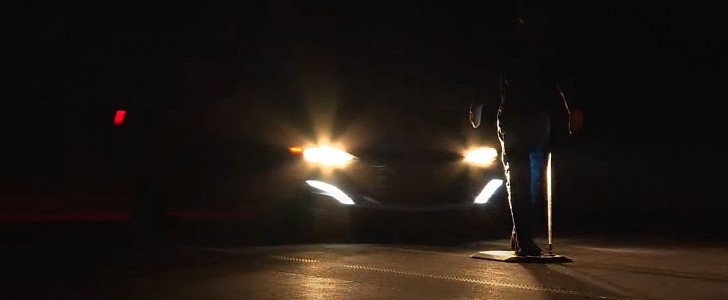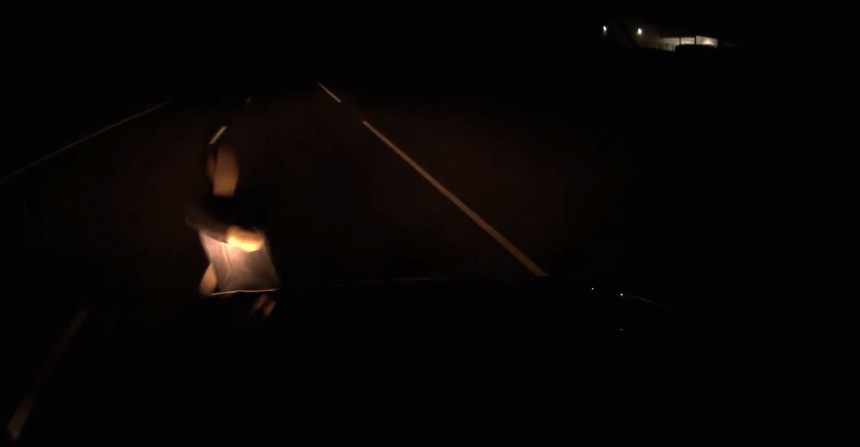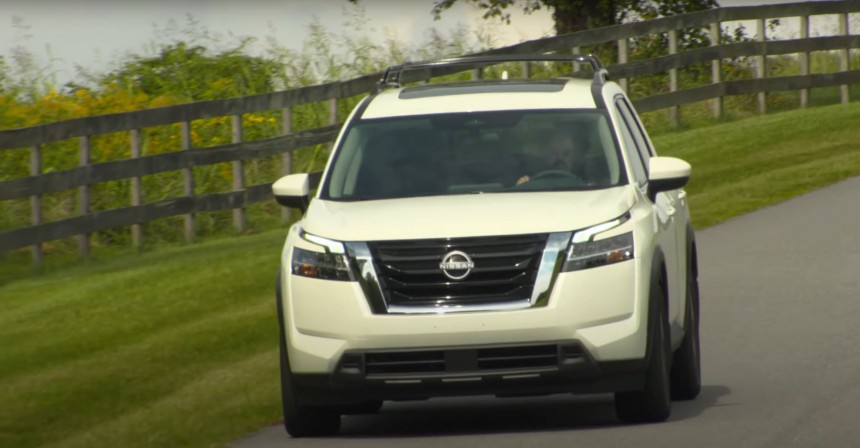The Insurance Institute for Highway Safety (IIHS) concluded a new safety test. After verifying multiple types of vehicles, it found out that the nighttime pedestrian automatic emergency braking (AEB) system doesn’t work as well as it should have across the board. Only four out of the 23 vehicles tested received the highest rating possible. Here’s what you should know about it.
According to the IIHS, Toyota’s Camry and Highlander, Ford’s Mustang Mach-E, and Nissan’s Pathfinder received the maximum rating. Their pedestrian automatic braking systems work perfectly fine at night.
However, only the Pathfinder was able to avoid a collision with the dummy every time.
The nonprofit organization also revealed which vehicles didn’t perform well enough to even receive a rating. These are as follows: the Chevrolet Malibu, Honda Pilot, Nissan Altima, and Toyota Tacoma.
Between the best and the worst nighttime pedestrian AEB (Automated Emergency Braking) systems, we find vehicles like the Honda Accord, Hyundai Palisade, Hyundai Sonata, Nissan Frontier, Nissan Murano, Subaru Ascent, and Subaru Outback. These earned the advanced rating.
All the vehicles that took part in the testing have been manufactured in 2022 or are a 2022 model year and have standard configurations.
Among the most notable absentees from this new test are Tesla, Rivian, Lucid, Dodge, Mercedes-Benz, Audi, Porsche, BMW, and luxury automakers like Bentley or Lamborghini.
An IIHS official says this new test has proven its worth since “eight of the 12 vehicles that earned a basic rating or no credit in the nighttime test got superior or advanced ratings in the daylight evaluation,” hinting that automakers should focus more on automatic safety systems and their feasibility in the absence of sunlight or a raised source of light.
The Institute underlines more pedestrian crashes happen at night than at any other time of the day. It also argues that “pedestrian fatalities continue to tick upward.” The low point was back in 2009. Now, the federal estimates for 2021 show an 80 percent rose in deaths from pedestrian crashes.
AAA, for example, has been saying that pedestrian detection systems don't work well at night since 2019!
The tests are done at speeds of 12 mph (19 kph) and 25 mph (40 kph) when the adult is crossing the road, while for the scenario when the adult is walking at the edge of the travel lane, vehicles travel at 25 mph and 37 mph (60 kph). If vehicles pass the basic requirements, then they'll advance to the more specific stages.
Nissan’s Pathfinder, for example, was tested multiple times with the high beams off or on. It stopped in each of the scenarios.
The other three vehicles rated as “superior” failed at completely halting in the 37-mph test scenario. They only slowed down enough to mitigate the accident.
All vehicles with the “advanced” rating weren’t able to avoid hitting the dummy while traveling at 37 mph but did stop when confronted with the other three scenarios.
Automakers that are gunning for the TOP SAFETY PICK+ award next year will have to make sure their vehicles earn at least an advanced rating in the nighttime pedestrian AEB test.
Finally, most people online applaud the IIHS for its initiative and consider the idea very useful.
However, only the Pathfinder was able to avoid a collision with the dummy every time.
The nonprofit organization also revealed which vehicles didn’t perform well enough to even receive a rating. These are as follows: the Chevrolet Malibu, Honda Pilot, Nissan Altima, and Toyota Tacoma.
Between the best and the worst nighttime pedestrian AEB (Automated Emergency Braking) systems, we find vehicles like the Honda Accord, Hyundai Palisade, Hyundai Sonata, Nissan Frontier, Nissan Murano, Subaru Ascent, and Subaru Outback. These earned the advanced rating.
More data is always welcomed
IIHS gave a basic rating to the Chevrolet Traverse, Ford Explorer, Ford Maverick, Ford Ranger, Mazda CX-9, Volkswagen Atlas, Volkswagen Atlas Cross Sport, and Volkswagen Tiguan.Among the most notable absentees from this new test are Tesla, Rivian, Lucid, Dodge, Mercedes-Benz, Audi, Porsche, BMW, and luxury automakers like Bentley or Lamborghini.
An IIHS official says this new test has proven its worth since “eight of the 12 vehicles that earned a basic rating or no credit in the nighttime test got superior or advanced ratings in the daylight evaluation,” hinting that automakers should focus more on automatic safety systems and their feasibility in the absence of sunlight or a raised source of light.
The Institute underlines more pedestrian crashes happen at night than at any other time of the day. It also argues that “pedestrian fatalities continue to tick upward.” The low point was back in 2009. Now, the federal estimates for 2021 show an 80 percent rose in deaths from pedestrian crashes.
AAA, for example, has been saying that pedestrian detection systems don't work well at night since 2019!
The new ratings will matter!
Wanting to address the issue by helping carmakers with their testing results and telling buyers what vehicles are the safest, the IIHS created this new testing procedure which aims to enhance AEB’s nighttime usability. Two scenarios are being recreated – an adult crossing the road and an adult walking at the edge of the travel lane when the outside light is equal to the light cast on Earth by a full moon.The tests are done at speeds of 12 mph (19 kph) and 25 mph (40 kph) when the adult is crossing the road, while for the scenario when the adult is walking at the edge of the travel lane, vehicles travel at 25 mph and 37 mph (60 kph). If vehicles pass the basic requirements, then they'll advance to the more specific stages.
Nissan’s Pathfinder, for example, was tested multiple times with the high beams off or on. It stopped in each of the scenarios.
All vehicles with the “advanced” rating weren’t able to avoid hitting the dummy while traveling at 37 mph but did stop when confronted with the other three scenarios.
Automakers that are gunning for the TOP SAFETY PICK+ award next year will have to make sure their vehicles earn at least an advanced rating in the nighttime pedestrian AEB test.
Finally, most people online applaud the IIHS for its initiative and consider the idea very useful.










